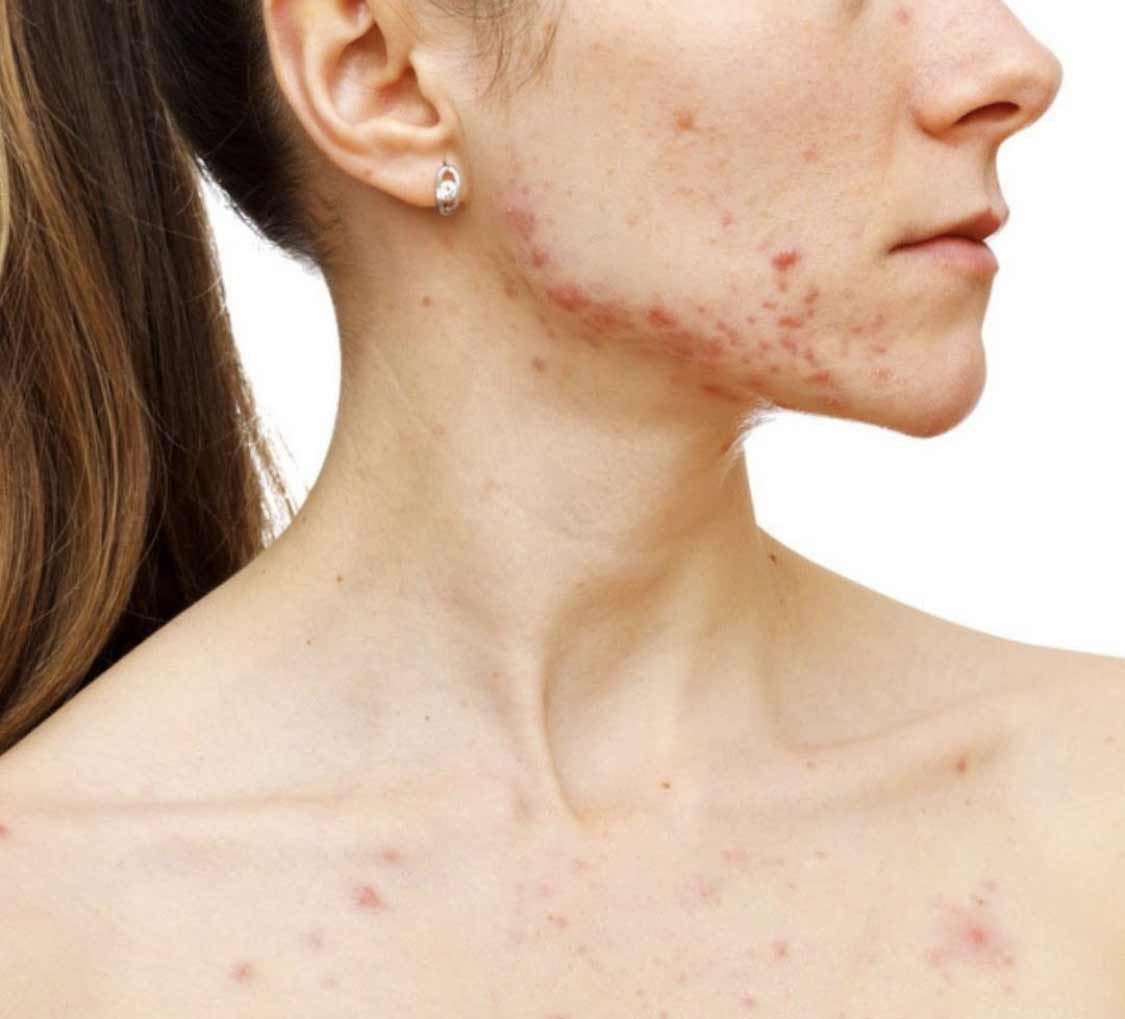
The 3 R’s of Skin Treatment
Repair: is the first step in skin treatment. Everyone has a different skin concern – discoloration, redness, breakouts, dryness or wrinkles, reactive skin. These are

Typical types of acne include: scaly red skin, blackheads and whiteheads, papules (pinheads), pustules (pimples) and nodules (large papules). All acne can result in scarring, however in darker skin scarring can be more prevalent.
Acne most often affects areas of the skin densely populated with sebaceous follicles; including the face, upper part of the chest and back. Severe acne is inflammatory, however acne can also manifest in non-inflammatory forms.
All forms of acne are caused by changes in pilosebaceous units – skin structures consisting of a hair follicle and its associated oil and sweat gland.
Generally occurs during adolescence, often continuing into young-adulthood. An increase in testosterone (which accrues in both genders during puberty) is the most common cause.
For many people, acne diminishes over time, tending to disappear completely (or at the very least, decrease substantially) around our early 20s. However some will experience acne well into their 30’s and 40’s and can in fact continue well into adulthood.
Effective treatments are very different depending on whether the acne is a dry acne (acne tarda), or a wet/oily acne. All too often people think all acne is produced from oily skin, however, many cases are actually caused by the skin being ‘dried out’. Sadly, this is generally caused by the inappropriate use of cosmetics for the true skin type. When the natural lipid balance of the skin is out of shape, the skin produces an over-abundance of sebum. Simple mistakes such as this can send the sebaceous glands into overdrive, which can result in acne.
There are different grades of acne, depending on the severity of the symptoms.
Acne develops as a result of blockages in hair follicles. Hyper-keratinisation and the formation of a plug of keratin and an increase in oil production is the earliest symptom.
Enlargement of oil glands and an increase in oil production also occur with increased androgen (hormone) production at puberty. Comedones are the direct result of oil glands overflowing and becoming clogged, and the accumulation of dead skin cells. In these conditions, naturally occurring Propionibacterium acnes (P. acnes bacteria) can cause inflammation, leading to lesions (papules, infected pustules, or nodules) in the dermis which results in redness and can result in scarring or hyperpigmentation.
Diet plays huge part in management of this condition. Regular consumption of cow’s milk has been associated with worsening the condition however, there is no evidence to suggest that the consumption of chocolate and salt contributes to acne.
It is very important to seek the right help and minimise worsening of this condition.

Repair: is the first step in skin treatment. Everyone has a different skin concern – discoloration, redness, breakouts, dryness or wrinkles, reactive skin. These are

Pure Skin Clinic in Auckland aligns bespoke Dermaviduals products with Corneotherapy for a skin care system that works. The main principle of Corneotherapy believes that
© 2024 Pure Skin Clinic. All Rights reserved.